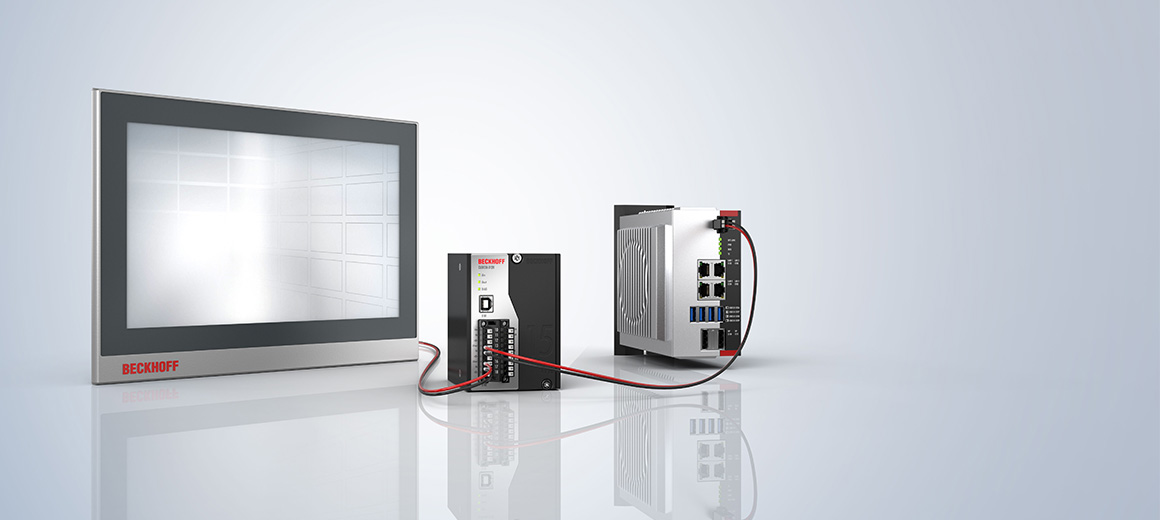

UPS modules

The CU81xx series modules enable an uninterruptible power supply (UPS) for all Beckhoff components, especially industrial PCs, embedded PCs, control panels, and panel PCs. If the external 24 V DC input voltage is lost, the UPS takes over the uninterruptible power supply of the devices connected to it thanks to its regulated and buffered 24 V DC output voltage.
Industrial UPS modules for DIN rail and control cabinet
The product portfolio includes both capacitive and battery-backed UPS modules with different retention times. The products can therefore cover a wide range of applications. Depending on requirements, the UPS modules can be mounted directly on a DIN rail or on the rear panel of the control cabinet. Communication with an industrial PC is either via OCT, USB, or digital signals. The retention and switch-off times can be conveniently set using Beckhoff’s own configuration software.
Technical basics and communication options
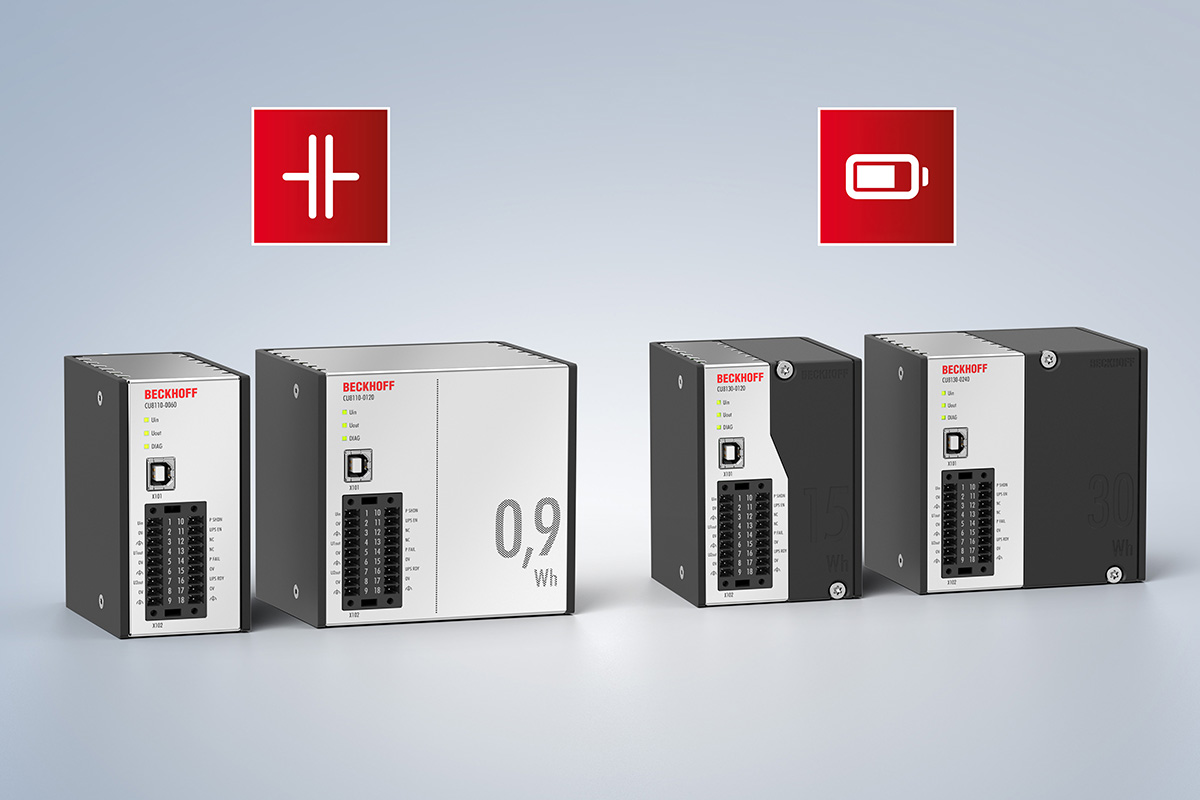
The CU81xx UPS series offers both capacitive (CU8110) and battery-backed (CU8130) UPS modules. Each energy storage technology in the UPS series – electric double layer capacitors (EDLC) and nickel-metal hydride batteries – has its own advantages and disadvantages, so users need to decide specifically which one is right for them. The application will determine which of the two is more suitable.
Electric double layer capacitors (EDLC)
The main advantage of EDLCs is that they are maintenance-free. There is no need to replace the energy module. However, during the initial design, it is important to consider that the required amount of energy should be overdimensioned by approximately a factor of 2 to 3. The disadvantage of EDLCs is that the charging capacity reduces over the years. As a rule, the worst-case scenario has proven to be that a maximum loss of capacity of 30% over a period of 10 years is to be expected. This means, for example, a maximum loss of energy of 51% after 20 years or 66% after 30 years. In practical use, such double layer capacitors have proven themselves to be maintenance-free energy storage devices capable of high currents in numerous application examples – including and especially in UPS applications.
Nickel-metal hydride batteries (NiMH)
If you’re looking for a storage device with higher energy density, nickel-metal hydride offers many advantages as a battery technology:
- Newer NiMH batteries have no loss of capacity at temperatures as low as -10°C.
- The number of cycles is around two to four times higher than with lead batteries.
- High discharge currents are possible.
- NiMH cells are free from cobalt and cadmium and, unlike Li-ion, are not classed as hazardous goods.
- NiMH cells are sealed and do not degas in normal operation. Nevertheless, adequate ventilation should be ensured in case a fault arises.
Beckhoff recommends replacing NiMH-based battery modules after five years. Given this, an important feature in the development process was that the modules could be replaced easily and would be highly sustainable. All the user has to do is release two fixing screws, and then the plug-in battery module can simply be pulled out of the UPS and replaced by a new module. The UPS electronics can remain in the mounted and wired state in the control cabinet and continue being used.
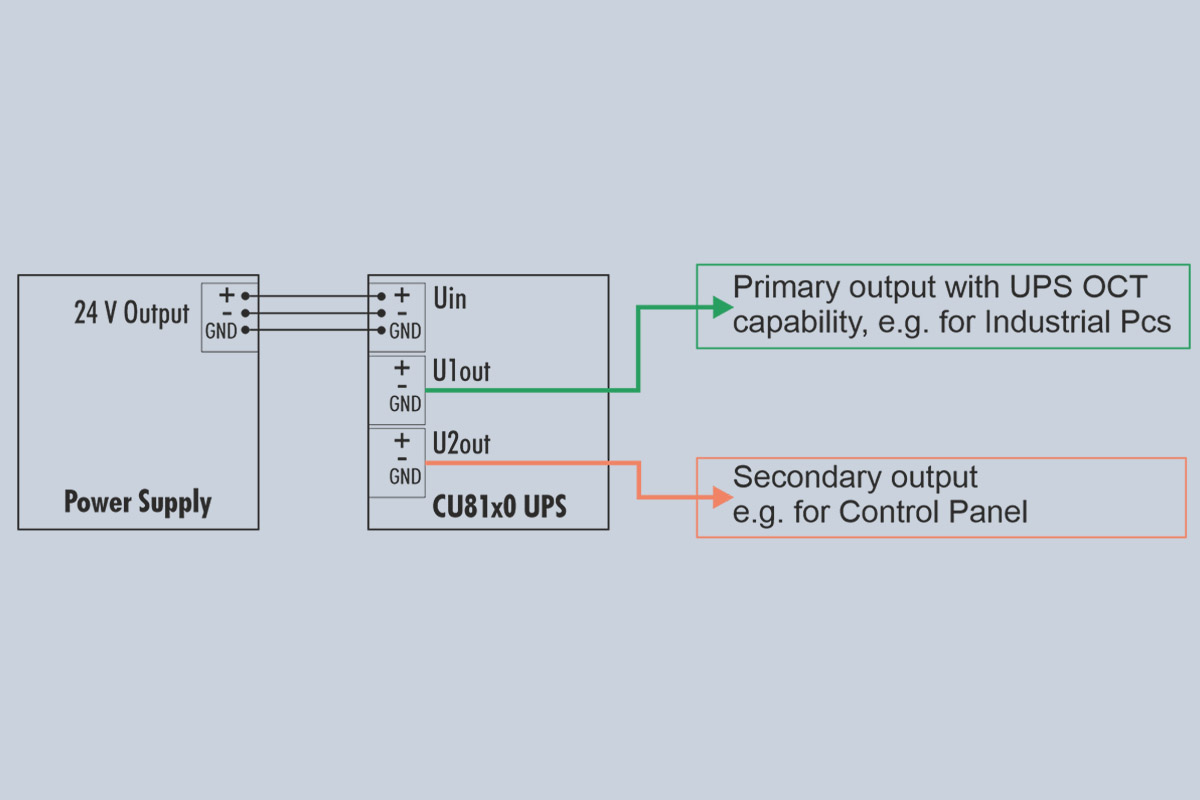
The input voltage Uin typically comes from a single-phase (230 V) or three-phase (400 V) AC power supply unit, the secondary side of which provides the 24 V DC operating voltage for the UPS. The charging electronics take the energy for charging the energy carrier – that is, the batteries or capacitors – from this input voltage. The charging electronics ensure that all parameters of the energy carrier (such as the maximum charge or discharge currents, temperatures, and minimum energy) remain within the permitted limits.
If the input voltage is at least 24 V – 15% (20.2 V), the UPS, which is connected between the AC power supply unit and the load to be supported, always supplies at least 24 V at the output due to a step-up converter. If the input voltage drops below this value, operation is switched to UPS mode and the output is supplied by the energy storage device (UPS mode). The UPS then continues to supply exactly 24 V. In the case of an input voltage from 24 V to 24 V+20% (28.8 V), this is present directly at the output due to the bypass circuit. If the input voltage exceeds the threshold of 28.8 V, a transition to UPS mode takes place in order to protect the end devices. At the same time, an overvoltage warning is output. Therefore, less than 24 V and more than 28.8 V can never be present at the UPS output.
The complete control of the UPS is handled by the central UPS controller, which orchestrates the interaction of all other microcontrollers (UPS-OCT communication, charge controller).
Communication via UPS-OCT
A special feature of the Beckhoff CU81xx devices is their OCT (One Cable Technology), which forms the communication technology between the UPS and the industrial PC. This means that the two connecting lines (+24 V, 0 V) between the industrial PC and the UPS are used not simply to supply the industrial PC, but also for bidirectional, modulated data transmission. This is a half-duplex connection, which means that both sides can transmit and receive, but not at the same time. If both sides are OCT-capable, no further connection (via USB, for example) is required. This simplifies cabling and also allows longer connection distances compared to USB.
Using the supply lines – which are present anyway – for digital data transmission saves having to use an additional data line, but requires both sides to be UPS OCT-capable. This will initially only be possible with controllers from Beckhoff.
Communication via USB
If UPS-OCT is not desired, or if the existing end device does not have this function, the connection can be realized via USB 2.0. In this case, Beckhoff UPS configuration software for the PC operating system in question is required to operate and parameterize the UPS.
The UPS modules of the CU81xx series can also be used for third-party PCs. This requires a USB connection and the use of the UPS configuration software on these PCs.
Communication via digital signals
The UPS can also be operated via digital 24 V I/O signals (e.g., with a PLC). The UPS provides the status of the power supply and the charge state for this purpose and can be switched on and off via inputs. This enables smaller machines to be brought into a safe state prior to shutdown, for example.
In this case, no Beckhoff UPS software is required to operate the UPS.
UPS modules

CU8110-0060 | UPS module, capacitive
CU8110-0060 is a capacitive, uninterruptible power supply (UPS) providing up to 0.3 Wh with a maximum output power of 55 W.

CU8110-0120 | UPS module, capacitive
CU8110-0120 is a capacitive, uninterruptible power supply (UPS) providing up to 0.9 Wh with a maximum output power of 110 W.

CU8130-0120 | UPS module, battery-backed
CU8130-0120 is a battery-backed, uninterruptible power supply (UPS) providing up to 15 Wh with a maximum output power of 110 W.

CU8130-0240 | UPS modul, battery-backed
CU8130-0240 is a battery-backed, uninterruptible power supply (UPS) providing up to 30 Wh with a maximum output power of 220 W.
The UPS modules are suitable for the following products, for example:
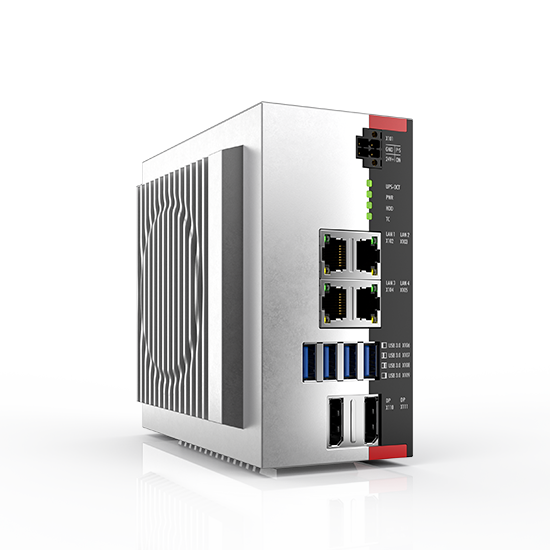
PCs
With self-developed and produced motherboards, the Beckhoff Industrial PCs combine performance with flexibility, stability, and long-term availability.
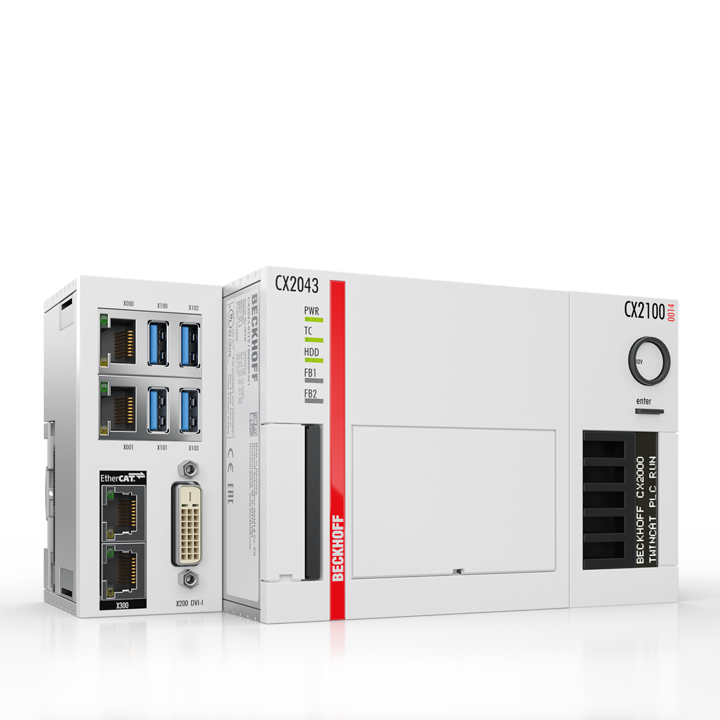
Embedded PC CX
With the CX series of Embedded PCs, Beckhoff has combined PC technology and modular I/O level to form a space-saving DIN rail unit in the control cabinet.
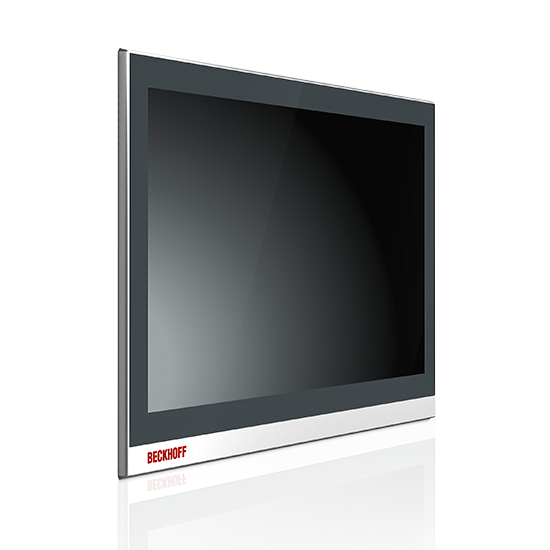
Control Panels
As the front end of a machine, the Beckhoff Control Panels are its visual and functional business card and allow a wide range of customer-specific adaptations.
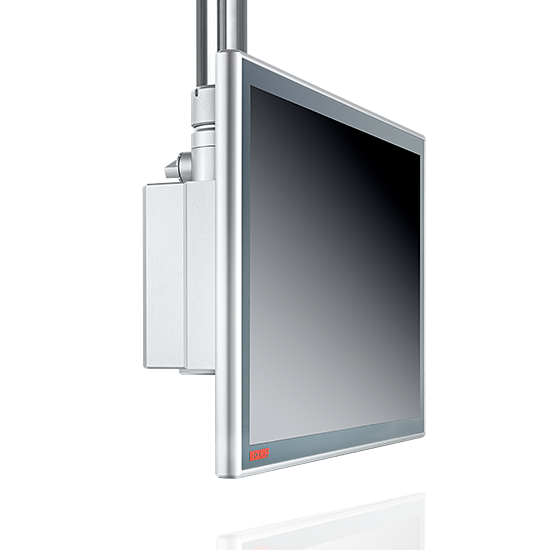
Panel PCs
The Beckhoff Panel PCs, in the versions as built-in devices or mounting arm devices in IP65, combine modern touch technologies with flexible computing power.